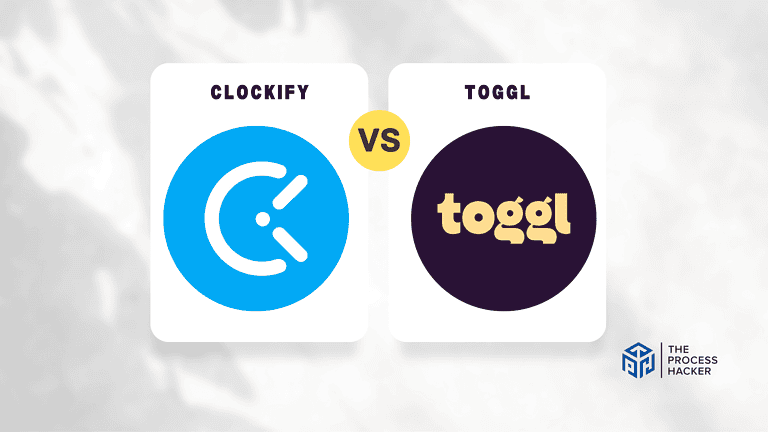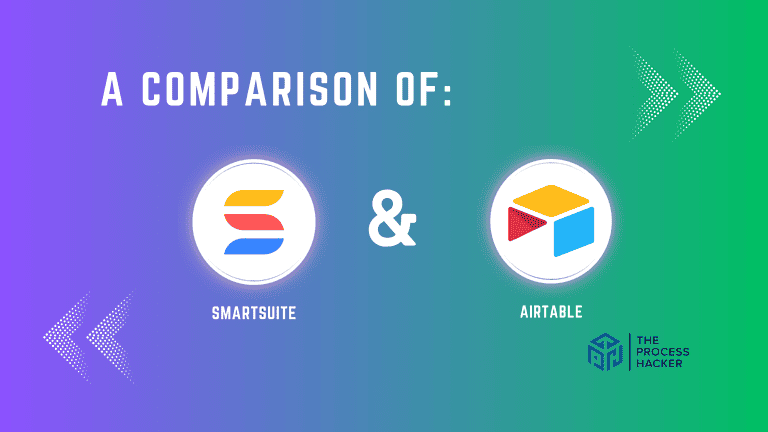What is a DSP? How to Choose the Right One for Your Small Business
By 2024, nearly 90% of all digital display ads in the US will be purchased programmatically through supply-side platforms like DSPs. That’s a staggering number, highlighting just how important this technology has become.
However, not all demand-side platforms (DSPs) are created equal. Choosing the right platform for your small business is crucial to maximizing your return on investment. In this guide, we’ll explain everything you need to know about DSPs, from their core functionalities to the key factors you should consider when selecting one.
By the end, you’ll be equipped to navigate the world of programmatic advertising and make informed decisions that drive real results for your business.
What is a Demand Side Platform?
The abbreviation DSP stands for demand side platform. It is a cutting-edge technology that allows advertisers to buy real-time ad impressions from various sources, including ad exchanges, networks, and publishers. DSPs leverage automation to streamline how to buy digital ad inventory across different channels.
In online advertising, demand-side platforms play a vital role in online advertising as they allow marketers to run ad campaigns and deliver them to their target audience precisely. Making the right choice when selecting a demand-side platform is paramount, as it simplifies the complex and time-consuming process of ad buying. A good DSP gives access to diverse ad inventory, enabling creation, management, and ad performance tracking for effortless optimization. The advanced features would allow ads to be delivered to the right audiences at the right time and make it as cost-effective as possible.
What are the Key Components of a DSP?
Let’s dive into the engine room of a DSP and explore the key components that make it tick:
1. Ad Exchange Connections
Think of ad exchanges as bustling marketplaces where publishers (website and app owners) offer their digital advertising space to advertisers. A good DSP is your key to these marketplaces, connecting you to a vast potential advertising real estate network.
Your campaigns can reach audiences across various websites, mobile apps, and even connected TV platforms. The more extensive a DSP’s exchange connections, the broader your reach and the more opportunities you have to connect with your target audience.
2. Real-time Bidding Capabilities
In programmatic advertising, every ad impression is auctioned off in real-time. This happens in milliseconds, so you need a system to keep up.
A DSP with robust real-time bidding (RTB) capabilities analyzes each impression and automatically places bids based on your campaign parameters. This ensures you’re only paying for impressions likely valuable to your business, optimizing your ad spend.
3. Data Management Integration
Data is the lifeblood of effective advertising. A powerful DSP allows you to integrate with various data sources, including your customer data, third-party data providers, and the DSP’s data segments.
This data integration empowers you to create highly targeted audience segments based on demographics, interests, behavior, and more. The result? Your ads are shown to the people most likely to engage with them, leading to higher click-through rates and conversions.
4. Ad Serving Functionality
Once you’ve won an ad impression, your demand-side platform must seamlessly deliver your ad creative to the publisher’s website or app. This is where ad-serving functionality comes in. A reliable DSP ensures your ads are displayed correctly, tracked effectively, and optimized for performance. Look for features like creative optimization tools, A/B testing capabilities, and detailed reporting to maximize the impact of your campaigns.
These core components work together to create a powerful advertising platform that gives you control, transparency, and efficiency in your campaigns. By understanding these components, you can better evaluate different DSPs and choose the one that best aligns with your specific needs and goals.
Why Does Choosing the Right DSP Matter?
When choosing the DSP to partner with, you are choosing more than just accessing ad inventory provided by publishers. This choice can define your ultimate success and maximize your ROI. A DSP that matches your needs and objectives and provides all the necessary features can help you achieve excellent campaign outcomes.
It gives you access to high-quality ad placements and minimizes the chances of facing ad fraud. You can devise effective advertising strategies to demonstrate the ads to the interested audience and increase engagement and conversions.
Choosing the wrong DSP can lead to wasted ad budgets and less effective campaigns. Therefore, it’s vital to invest your time in picking the DSP that aligns with your specific business goals and gives you the functionality to implement all your ideas.
How DSPs Revolutionize the Ad-Buying Process
For years, buying ad space was a laborious, manual affair involving phone calls, negotiations, and endless back-and-forths with publishers. But with the rise of DSPs, the ad-buying landscape has undergone a dramatic transformation.
Let’s explore how these platforms streamline and optimize how businesses reach their target audiences.
Traditional vs. Programmatic Ad Buying
Here’s the comparison table you requested, highlighting the key differences between traditional and programmatic ad buying:
| Feature | Traditional Ad Buying | Programmatic Ad Buying (DSP) |
| Process | Manual (negotiation, calls, emails) | Automated (bidding, delivery) |
| Targeting | Limited (demographics, categories) | Granular (data-driven, precise) |
| Pricing | Opaque (variable, hard to assess) | Transparent (real-time bidding) |
| Campaign Management | Static (changes are difficult) | Dynamic (real-time optimization) |
Real-Time Bidding (RTB) Explained
Now, let’s delve into the fascinating world of real-time bidding (RTB), a core component of programmatic advertising that drives efficiency and performance for marketers.
The Mechanics of RTB
Imagine a lightning-fast auction whenever you load a website or open an app. That’s what RTB is all about. Whenever there’s an ad impression available, a complex ecosystem of advertisers and publishers springs into action.
Here’s a simplified breakdown of the process:
- You visit a website: The website owner (publisher) requests an ad exchange, signaling that an ad impression is available.
- The auction begins: The ad exchange puts the impression up for auction, inviting advertisers to bid on it.
- DSPs evaluate the impression: Your DSP analyzes the impression data, including information about you (the potential viewer), the website, and the ad placement.
- Bids are placed: Your DSP automatically places a bid on the impression based on your campaign parameters and the impression data.
- The highest bidder wins: The ad exchange selects the highest bidder and displays their ad to you.
This happens in the blink of an eye, typically within milliseconds.
How RTB Optimizes Ad Spend
RTB offers a significant advantage over traditional ad buying when optimizing ad spend. Here’s how:
- Precision Targeting: RTB allows you to bid on impressions that match your target audience criteria. This means you’re only paying for ads shown to people most likely interested in your offer.
- Value-Based Bidding: You can set different bid amounts for impressions based on their perceived value. For example, you might bid higher for impressions from users who have previously visited your website or shown interest in your products.
- Real-Time Adjustments: You can monitor your campaigns in real time and adjust your bids and targeting parameters. This ensures you’re always getting the best possible return on your investment.
Benefits of Real-Time Decision Making
The real-time nature of RTB empowers you to make data-driven decisions that optimize your campaigns on the fly. This agility allows you to:
- React to Market Changes: Quickly adapt your campaigns to changing market conditions or competitor activity.
- Capitalize on Opportunities: Identify and seize emerging opportunities to reach your target audience.
- Improve Campaign Performance: Continuously refine your campaigns based on real-time performance data.
RTB is a game-changer for advertisers, providing unparalleled control, efficiency, and transparency in ad-buying. By understanding the mechanics of RTB and its benefits, you can leverage this powerful technology to achieve your advertising goals.
How to Choose the Right DSP for Your Small Business
Now that we have a clearer understanding of DSPs and how they function, let’s focus on selecting the right platform for your small business.
This decision can significantly impact your advertising campaigns’ effectiveness and overall marketing automation ROI.
To guide you through the selection process, we’ll outline key factors to consider, essential features to look for, and potential pitfalls to avoid.
1. Assess Your Business Needs
Before diving into the world of DSPs, it’s essential to take a step back and evaluate your specific business needs and advertising goals. This self-assessment will lay the foundation for making an informed decision on your marketing metrics. Consider the following questions:
- What are your campaign objectives? Are you focused on increasing brand awareness, driving website traffic, generating leads, or boosting sales?
- Who is your target audience? What are their demographics, interests, behaviors, and online habits?
- What is your budget? How much are you willing to invest in programmatic advertising?
- What channels are most important to you? Do you want to reach your audience on desktop websites, mobile apps, connected TV, or a combination of channels?
- What level of control and transparency do you need? Are you comfortable managing your campaigns directly, or do you prefer a more hands-off approach?
- What internal resources do you have? Do you have the expertise and bandwidth to manage programmatic campaigns in-house, or will you need support from an agency or the DSP provider?
Answering these questions will help you define your priorities and narrow down your options. Remember, the “best” DSP is the one that aligns most closely with your unique business requirements and goals.
2. Comparing DSP Types: Self-Serve vs. Full-Service
| Feature | Self-Serve DSPs | Full-Service DSPs |
| Control | Direct control over campaigns | Managed service by platform experts |
| Expertise | Requires internal programmatic knowledge | Leverages the expertise of the DSP team |
| Flexibility | High level of customization | May have limitations based on service level |
| Support | Limited support resources | Dedicated account management and support |
| Cost | Typically, lower cost, often with platform fees | Higher costs, including management fees |
| Scalability | It can be challenging to scale campaigns with limited resources | Easier to scale with dedicated support |
| Best for | Businesses with in-house expertise and resource availability | Businesses seeking expert management and support |
3. Consider High-quality Inventory
An important factor to consider when comparing demand-side platforms is the quality of their ad server inventory. High-quality inventory means no fake bot-generated traffic, placement in an obvious part of the website or app and no inappropriate resources that can undermine the brand image. Better inventory quality implies a higher chance that your ads will be delivered to your target audience.
When selecting a DSP, ask yourself questions such as:
- Does the DSP I like have partnerships with premium ad networks, exchanges, and publishers?
- Can it preserve my brand reputation and offer ad placements in safe environments?
- Does it offer enough transparency on where and to whom my ads are displayed?
Access to high-quality inventory enhances the performance of your campaigns and protects your business’s reputation.
4. Access Diverse Ad Inventory or Multiple Ad Exchanges
Another critical factor is the reach of the DSP’s inventory. Some platforms can reach global audiences across countries and grant access to ad inventory worldwide, which can be advantageous for businesses looking to raise their brand awareness globally.
However, if your business intends to go something other than global and the local market is enough, you can opt for a DSP that offers regional ad placements.
Ask yourself:
- Is my target audience global or local?
- Does the DSP I am interested in offer quality inventory for the zones I want to reach?
The success of your advertising efforts also depends on the channels you want to advertise on. Most DSPs support a variety of ad formats, such as video, display, rich media, etc. It’s imperative to find the format that will be appropriate for the channels you aim for.
Mobile advertising
Nowadays, most users opt for mobile. Thus, selecting a DSP with strong mobile capabilities is key. Look for DSPs that offer ad formats that perform great on mobile. These formats include in-app ads, mobile web, or playable ads.
CTV advertising
CTV, or connected TV, is a rapidly growing channel. A DSP with strong CTV expertise will ensure access to top-notch inventory on popular streaming services to deliver ads to very engaged viewers.
Video ads
Video advertising continues to be the best format for driving user engagement. If your business wants to experiment with video content, ensure that your DSP gives access to video ad placements and enables video formats.
5. Evaluating DSP Features and Capabilities
Each demand-side platform possesses its range of features. Choosing a platform that provides the features your business will benefit from is important. Some of the features that can come in handy include:
Advanced targeting options
Various targeting options allow marketers to adjust and personalize ads accordingly. Advanced targeting enables filters based on customer’s behavior, preferences, and demographics.
Real-time bidding efficiency: The right platform should have powerful RTB capabilities. RTB means you can bid for ad impressions in real-time and buy the most reasonable options that fit your budget.
Analytics and reporting
It’s imperative to monitor and analyze your ad performance continuously. This enables you to optimize your campaign effectively and make data-driven improvements to your marketing game. Look for DSPs that offer detailed insights into the relevant metrics.
Multiple ad formats
Ensure the DSP supports various ad formats, including display, native, video, shoppable ads, and rich media. Feel free to experiment with different formats to see what works better.
6. Setting Up Your First Campaign
Once you’ve chosen your DSP, it’s time to launch your first campaign. Here’s a step-by-step guide to get you started:
- Define Your Target Audience: Who are you trying to reach with your ads? Use the DSP’s targeting options to narrow your audience based on demographics, interests, behaviors, and more.
- Set Your Budget and Bidding Strategy: Determine how much you’re willing to spend on your campaign and choose a bidding strategy that aligns with your goals. Do you want to maximize clicks, impressions, or conversions?
- Design Your Ads: Create visually appealing and engaging ads that resonate with your target audience. Use high-quality images and compelling copy to capture attention.
- Select Your Ad Placements: Choose where you want your ads to appear. Do you want to focus on specific websites, apps, or categories?
- Monitor and Optimize: Once your campaign is live, monitor its performance closely. Track key metrics and make adjustments as needed to improve your results.
By following these steps and best practices, you can effectively leverage the power of DSPs to reach your target audience, achieve your campaign objectives, and drive business growth. Remember, the key is to start with a clear strategy, choose the right DSP, and continuously optimize your campaigns based on data and insights.
7. Optimize Campaign Performance
Launching your campaign is just the first step. To truly maximize your results, ongoing optimization is key. Here’s how to fine-tune your campaigns for optimal performance:
- A/B Testing: Experiment with ad creatives, headlines, and calls to action to see what resonates best with your audience.
- Refine Targeting: Analyze your campaign data to identify your most engaged audience segments. Refine your targeting parameters to focus on those most likely to convert.
- Adjust Bidding Strategies: Experiment with different bidding strategies to optimize your ad spend and maximize your ROI.
- Monitor Landing Pages: Ensure your landing pages are optimized for conversions. A clear call to action, relevant content, and a user-friendly design are crucial.
- Stay Informed: The digital advertising landscape is constantly evolving. Stay up-to-date on the latest trends and best practices to ensure your campaigns remain effective.
You can maximize your DSP investment by actively monitoring, analyzing, and adjusting your campaigns. Remember, continuous optimization is the key to unlocking the full potential of your digital advertising efforts.
8. Scale Your Advertising Efforts
Once you’ve found your rhythm with a DSP and have optimized your initial campaigns, it’s time to think bigger. Scaling your advertising efforts allows you to reach a wider audience and amplify your impact. Here’s how to do it effectively:
- Increase Budget Gradually: Do not increase your budget drastically overnight. Instead, gradually increase your spending while carefully monitoring performance to ensure you maintain a positive return on investment.
- Expand Your Targeting: Explore new audience segments similar to your ideal customer profile. This will allow you to reach a broader audience while maintaining relevance.
- Diversify Ad Formats: Don’t limit yourself to a single ad format. Experiment with different creative options, such as video, interactive, and native ads, to capture attention and engage your audience.
- Automate Campaign Management: Leverage automation tools within the DSP to streamline repetitive tasks, such as bid management and ad scheduling. This frees up your time to focus on strategic planning and optimization.
- Explore New Channels: As you grow, consider expanding your advertising efforts to new channels and platforms. This could include connected TV (CTV), audio advertising, or other emerging channels that align with your target audience.
Remember, scaling your advertising efforts is a gradual process. Continuously analyze your data, make data-driven decisions, and adapt your strategies to achieve sustainable growth.
Final Thoughts on Demand-Side Platforms
DSPs offer small businesses a powerful and efficient way to navigate the complexities of digital advertising. They empower you to reach your ideal customers and achieve your campaign objectives by automating ad buying, providing precise targeting options, and delivering robust reporting and analytics.
When selecting a DSP, remember to carefully consider your budget, goals, and technical capabilities. Also, prioritize ongoing optimization and strategic scaling to maximize your return on investment.
With the right approach, DSPs can become an invaluable tool in your digital marketing arsenal, driving business growth and helping you stay ahead in today’s competitive landscape.







